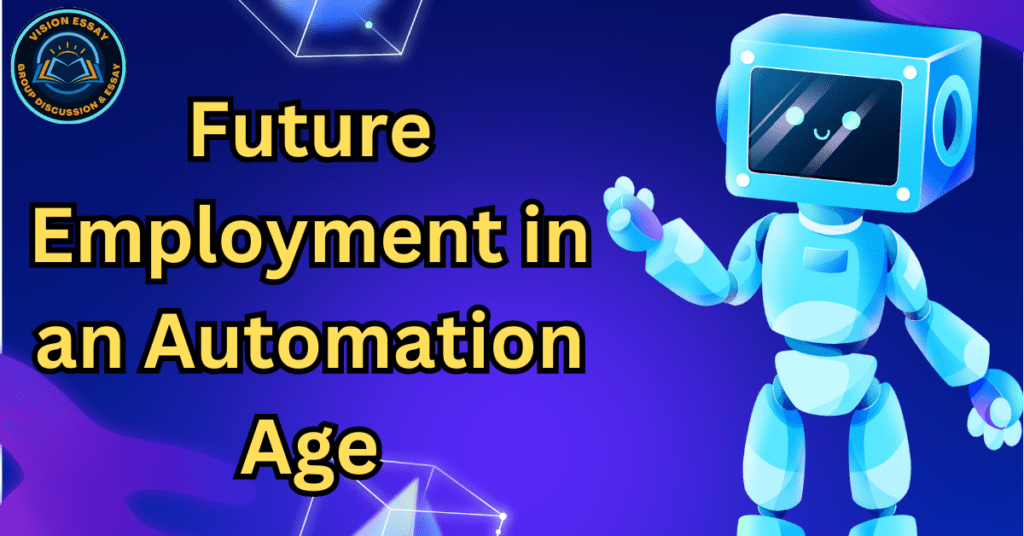
Introduction
Automation is about to reshape labor in India in a way that is both nostalgic and innovative. The cohabitation of tech titans with conventional marketplaces is a reflection of a complex shift.
Automation
Automation in the context of work refers to the utilization of software, hardware, and artificial intelligence to carry out activities that were previously completed by people. This might include simpler duties like organizing products on a conveyor belt at a manufacturing facility or more complex ones like data analysis and decision-making.
This is not a theoretical concept for Indians. Consider the ways that Zomato utilizes data analytics to recommend customized meal alternatives, or Flipkart’s use of algorithms to maximize delivery routes. Chatbots answer consumer questions and offer prompt responses on banking websites like ICICI and HDFC. IRCTC’s ticketing system, which serves millions of people every day, is another excellent illustration of automation in action. Automation is, as we can see on these well-known Indian platforms, essentially changing positions, restructuring sectors, and blending smoothly into our daily lives.
Impact of Automation on Jobs
The work economy in India is being drastically altered by automation. Automation and robots are being used in industries including IT, finance, healthcare, and auto manufacturing to increase productivity. For example, robotics is used in Chennai’s car manufacturing facilities to produce goods more quickly and with better quality. Banking behemoths use sophisticated ATMs and chatbots to enhance client experiences. Surgical assistants and automated diagnostic technologies are used in healthcare to increase accuracy and decrease errors. Processes are streamlined by IT automation, which also motivates experts to develop specialized knowledge. Drones and autonomous tractors are beneficial to agriculture and promise higher harvests. Indian workers must change, grow, and get ready for a future in which people and robots live in harmony as a result of this shift.
Loss of Employment
Automation brings efficiency, but efficiency also raises the possibility of job displacement, especially in a nation like India where the workforce is varied and large. Conventional positions are becoming less and less secure, particularly in industries where repetitive activities are crucial.
Consider the humming call centers in Noida and Gurugram. Several customer care positions, particularly those in the lower echelons of the support hierarchy, may become obsolete as AI-powered chatbots improve in skill. The rise of Internet banking and digital payment systems has decreased the number of people visiting bank branches, hence decreasing the demand for conventional bank tellers in places like Bengaluru and Mumbai.
There might also be disruptions in the transportation sector. The day when drivers’ jobs are replaced or drastically changed is not far off, as India advances its goals for smart cities and makes investments in the development of driverless cars.
Additionally, industries like textiles and handicrafts, which have long been the pride of cities like Jaipur and Varanasi, may see some of their processes automated, which might have an impact on skilled workers who have developed their trade over many generations.
But it’s important to remember that, despite the fact that this change may appear concerning, human adaptability is demonstrated by history. Similar to how worries about mass unemployment accompanied the Industrial Revolution in the late 1700s, it also ultimately resulted in the development of whole new possibilities and professions. Similar to this, while hard, India’s automation tsunami also holds the possibility of new positions, sectors, and uncharted paths.
New Possibilities
Automation is not only a sign of things to come in India; it is also a driving force behind creativity and new prospects. A plethora of new job categories are developing, providing a dynamic employment environment, even as existing positions become obsolete.
Based on publications from the government’s top think-tank, NITI Aayog, and its official website, it is clear that India has the potential to dominate the world in robotics and artificial intelligence. Jobs in robotics control design, machine learning model training, and AI programming will unavoidably result from this.
Additionally, as per the Ministry of Electronics and Information Technology (MeitY), the successful realization of India’s digital vision could yield significant economic value, potentially reaching up to $1 trillion, a significant rise from the current $200 billion. Furthermore, by 2025, it may help create between 60 and 65 million employment in the digital economy.
Furthermore, there is an increasing need for workers in cutting-edge industries like augmented reality design, blockchain development, and quantum computing, according to NASSCOM, the Indian IT industry association.
It’s important to emphasize, though, that although robots are good at quantitative jobs, they don’t have the same qualitative touch as people. Human abilities like as empathy, creativity, and complex problem-solving are still indispensable. This contrast highlights the increasing need for people in tasks that are difficult for robots to imitate, such as design thinking, content development, and mental health counseling.
Essentially, automation is reshaping the traditional labor market, but India’s focus on innovation—supported by government programs and business acumen—guarantees a rich tapestry of chances for the astute professional.
Also read: Tourism and Globalization 2023
Upskilling
Upskilling has become essential in the ever-changing Indian scene. India’s talent pool has to be continuously educated in order to remain internationally competitive due to its large population. Courses on new technology trends are available at prestigious universities like IITs and IIMs. To upskill its employees, big IT companies like Infosys, TCS, and Wipro have opened training facilities and teamed up with sites like Coursera and Udemy. Courses on new technology trends are available at prestigious universities like IITs and IIMs. Machine learning and blockchain seminars are offered by startups and incubation organizations.
The old “study-work-retire” paradigm will give way to a cyclical “study-work-upskill-repeat” one as a result of this change. Learning is possible at home with the help of MOOCs and digital platforms. Upskilling is essential for professional progress in the age of rapidly advancing technology.
NASSCOM and the Ministry of Electronics and Information Technology (MeitY) have launched a digital upskilling incentive program via FutureSkills Prime, their platform. Primarily, the platform aims to tackle the deficiency of skills among applicants at the entry level and teach the present Indian workforce in advanced technology.
Projects like e-NAM from Digital India demonstrate the human-machine symbiosis by providing farmers with digital solutions. With this collaboration, new avenues for technological advancement and hitherto unimagined technologies should become possible.
Trends of Remote Work
Once only a spike on India’s job radar, remote labor has become increasingly popular, thanks in part to the forces of automation and the digital revolution coming together.
The majority of Indian IT businesses were compelled by the epidemic to adopt a work-from-home policy. This change wasn’t a one-time thing; a lot of businesses are thinking about using a hybrid model that strikes a balance between office presence and remote employment.
One of India’s largest IT companies, Infosys, has announced a move to a flexible “hybrid work model” in order to handle the uncertainties brought on by the epidemic, according to an article in the Economic Times. This says a lot about how India’s workplace culture is evolving.
Given that places like Bengaluru, Mumbai, and Delhi are infamous for their terrible traffic jams, many employees find that having no commute is a huge benefit.
MeitY has always supported digital platforms and tools. Their drive for Digital India goes beyond simply digitizing services; it also involves encouraging an office environment that makes use of these technological resources to facilitate remote work.
Businesses in India are using remote collaboration platforms like Zoom, Slack, and Trello at higher rates than before. This demonstrates how shifting paradigms have made productivity and finishing tasks more important than set work schedules.
Also, the trend toward remote work is democratizing job possibilities. Talents from Tier-2 and Tier-3 cities, who formerly faced obstacles due to geography, are now afforded equal possibilities in the domestic and international labor markets. Indian experts are increasingly providing their skills on websites like Upwork and Freelancer, which suggests that project-based work and freelancing are in high demand.
Conclusion
Automation is a clear signal of adaptability rather than a sign of impending unemployment. The path ahead at this juncture is preparation rather than opposition. Accept the shift, improve your abilities, work together, and cautiously but enthusiastically enter the dynamic, automated future. The nature of work is evolving, but if one has the correct attitude, this is a promising and potentially-filled time.
Sources:
- https://www.washingtonpost.com/technology/2023/10/03/ai-customer-service-jobs/
- https://www.niti.gov.in/sites/default/files/2023-02/Annual-Report-2022-2023-English_1.pdf
- https://www.meity.gov.in/writereaddata/files/Call%20for%20Proposal-final_.pdf
- https://www.pmkvyofficial.org/about-pmkvy
- https://indianexpress.com/article/business/economy/artificial-intelligence-expected-to-add-500-bn-to-india-gdp-by-2025-8507775/#:~:text=Artificial%20intelligence%20(AI)%20is%20expected,a%20report%20said%20on%20Monday
- https://opengovasia.com/indian-government-launches-digital-upskilling-programme/
